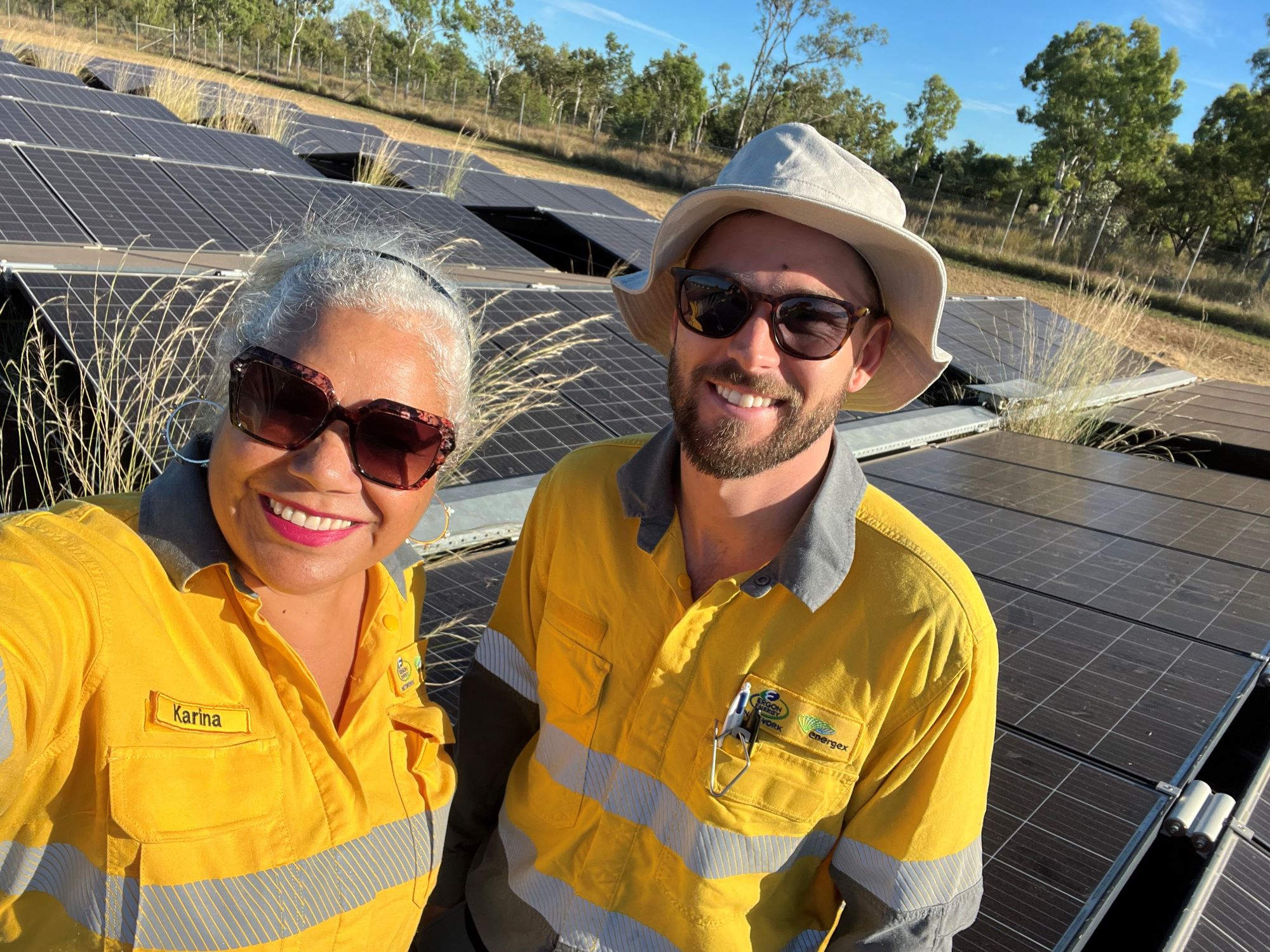
Ergon Energy staff maintenance check at the Doomadgee solar farm site
Doomadgee is a proud Aboriginal community with around 1,390 people living in and around the traditional homelands of the Gangalidda and the Waanyi people, around 1,000 kms west of Cairns.
With funding from the Queensland Government, Ergon Energy Network will be installing an additional 4.5MW (megawatts) of centralised solar farm capacity, and 1MWh (megawatt-hour) of grid-forming energy storage at the existing Doomadgee Solar Farm.
The project will mean over half of the energy supplied to the community each year will be renewable energy. The investment in energy storage will allow the system to maintain the system voltage in ‘grid forming mode’ and even allow the diesel generation sets to be turned off at times. Together this will save over 680,000 litres of fuel a year, cutting greenhouse gas emissions and operating costs extending the life of the diesel generation sets.
To find out more about the Doomadgee community, and its isolated electricity network, read our Doomadgee profile and Frequently Asked Questions.
You can keep up to date and provide feedback on the latest project activities through the following information.
Download our newsletters and notices to find out more.
Subscribe for updates and select ‘Doomadgee solar farm & battery' in the Major Project drop down list. And you can add in ‘Keep me updated’ in the Your Feedback section.
Any personal information we collect about you will only be used and disclosed by us in accordance with our Privacy Statement.

Ergon Energy staff maintenance check at the Doomadgee solar farm site
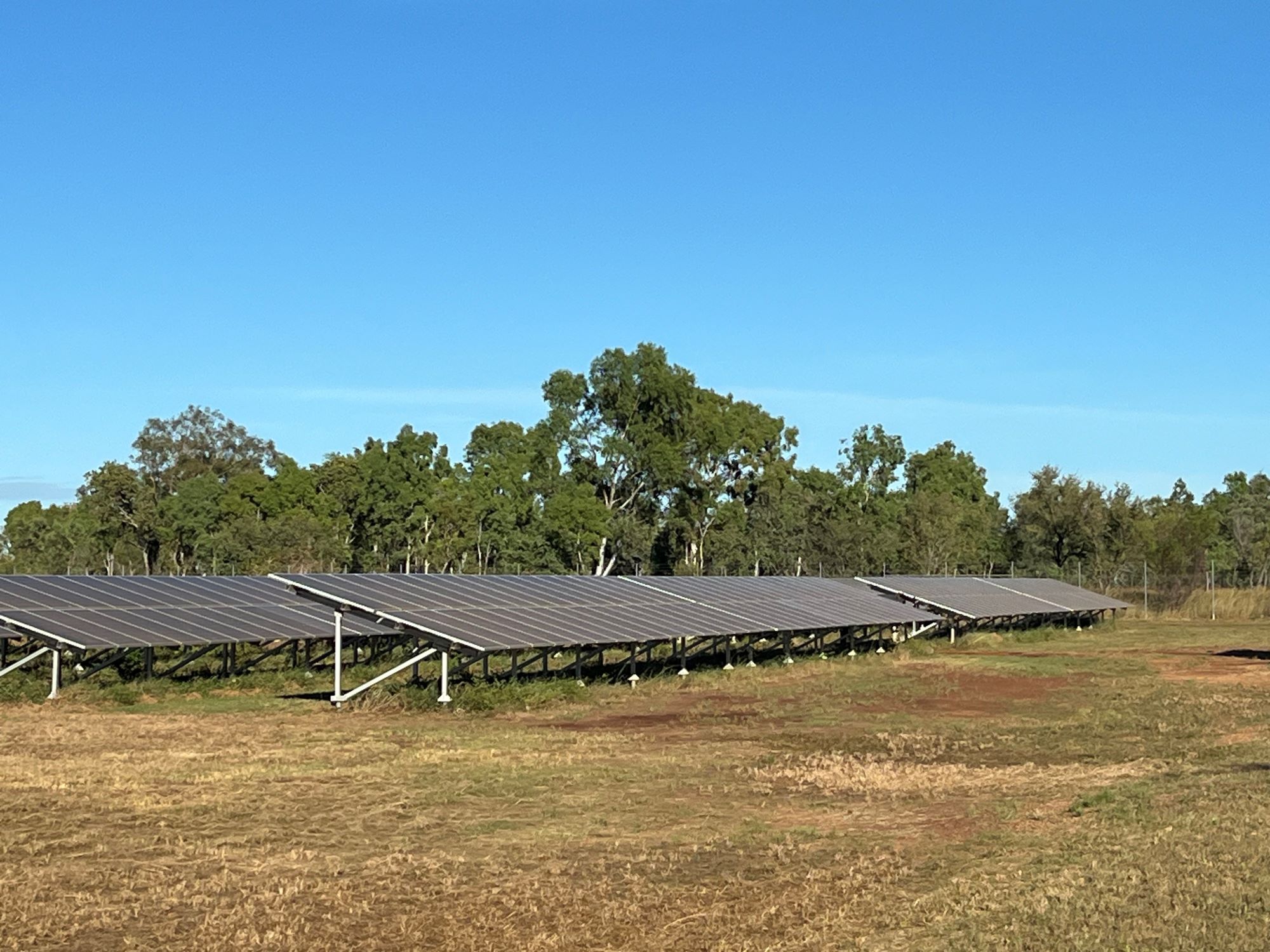
Solar panels at Doomadgee solar farm
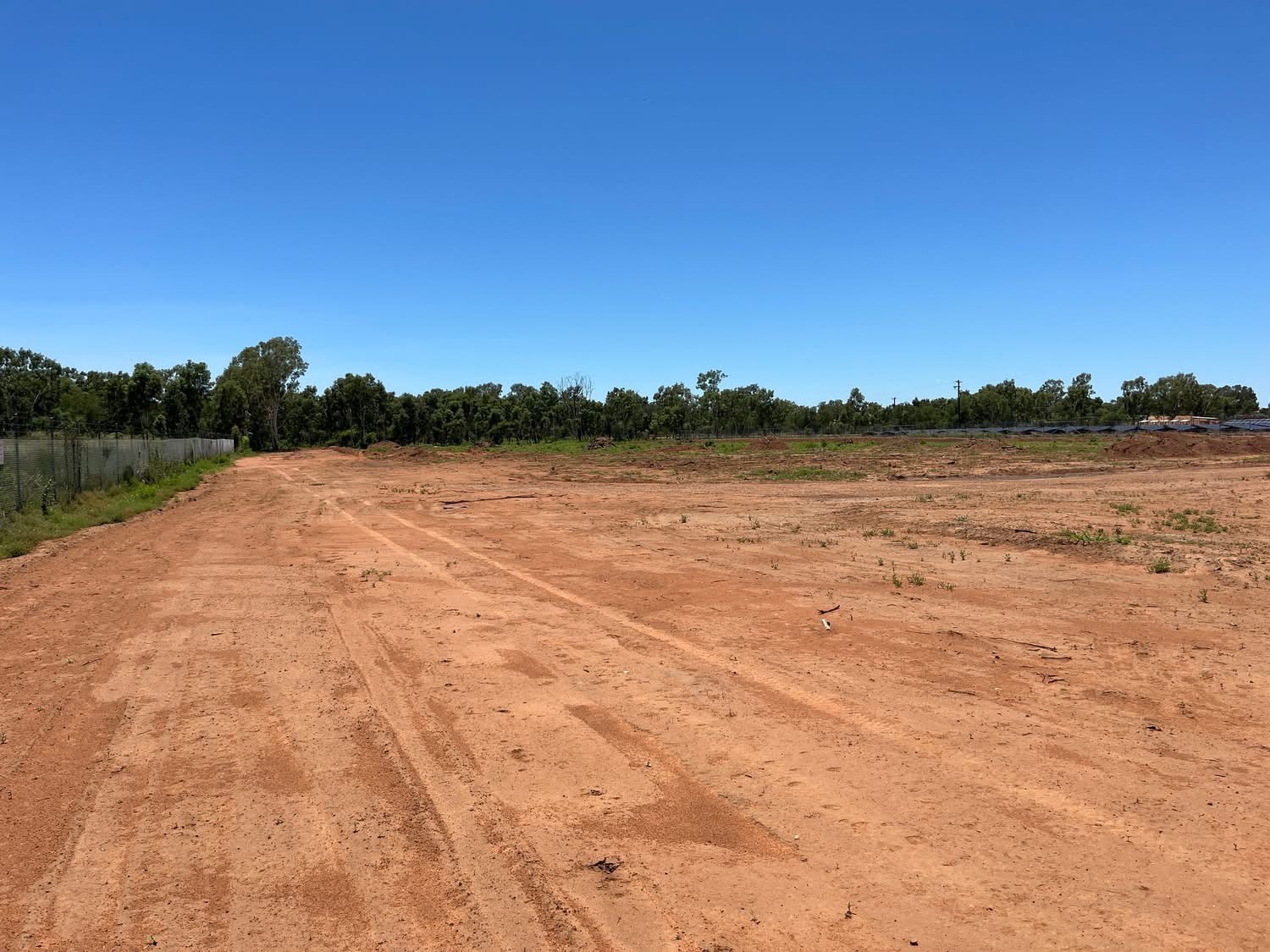
Civil works started on expansion of Doomadgee solar farm
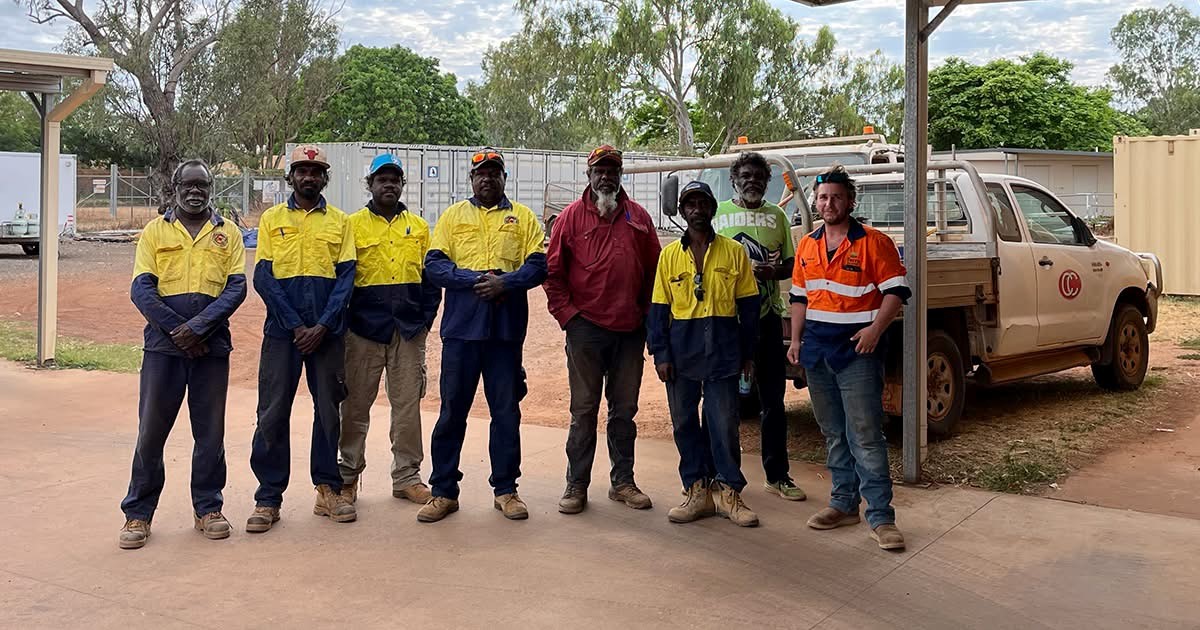
Stage1 - Civil works completed on expansion of Doomadgee
Doomadgee’s electricity network is an isolated network, so it’s similar to a microgrid.
A microgrid is a small-scale electricity network, powered by one or many distributed energy resources, like solar PV, wind, and diesel.
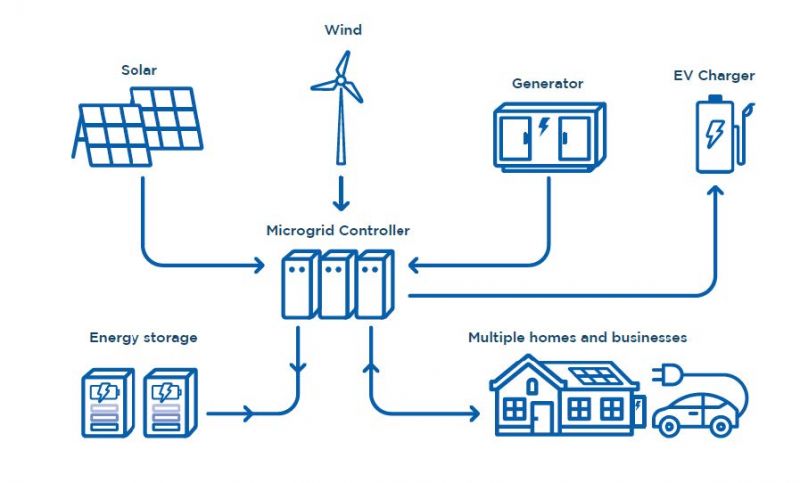
With advances in technology, they are increasingly intelligent energy systems, designed to be self-sufficient and to power the electricity needs of a discrete group of customers, or small community like Doomadgee.
Microgrids can be operated either connected to, or stand alone, from the main electricity network. Doomadgee’s isolated network is a standalone microgrid, not connected to the main electricity grid.
BESS stands for Battery Energy Storage System but these are commonly just called batteries.
They are a type of energy storage system that uses batteries to store excess energy for use later.
They come in various shapes and sizes, and they can use different technologies. They are essentially a rechargeable battery that can store excess energy, often from renewable energy sources like solar PV, that can be used later when it’s needed, like at night when people come home and turn on their air conditioners and cook dinner.
They also help with smoothing the power output when the solar system is intermittent, like when a cloud passes over.
They play an important role in making renewable energy more readily available, for instance, not just when the sun is shining.
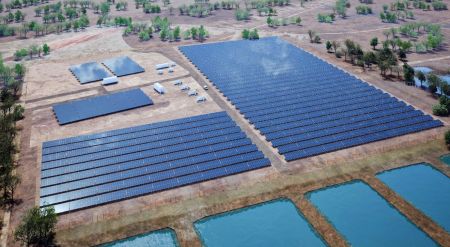
Artist's impression of Doomadgee solar farm extension
Doomadgee’s solar farm extension and battery will be located on the existing site of the Doomadgee Solar Farm on Castrick road. The artist impression above shows the existing solar farm and what will be added during the project.
The initial phase of the project will involve preliminary Civil works delivered by the Doomadgee Aboriginal Shire Council and Ergon finalising the scope work, followed by Stage 2 involving the Solar Farm Design and Build.
The first stage of the new solar and battery farm project, is to go out to tender for the contractor who will construct the new solar and battery farm. Tender applications will be reviewed and assessed, and the successful tenderer awarded the contact.
This stage commenced in December 2023 and was completed in June 2024.
Stage 2 of the project will see our Isolated Systems Team finalise the design of the new Doomadgee solar farm. The new solar farm will then start to take shape on the ground as the successful contractor completes the civil and electrical construction to build the new solar farm.
This stage will commence in May 2025 pending wet season access.
Stage 3 will involve the design and construction of the batteries and inverters. During the design phase the team will design how Doomadgee's solar, batteries and diesel generator interact into a single integrated system.
Stage 3 will commence end of 2025 and be completed mid 2026.
The fourth and final stage of the project is system integration and commissioning. During this stage, our technical experts will test the system to ensure all aspects of the intelligent microgrid system are integrated and operating properly. They will conduct a range of tests to ensure safe operations and performance before commissioning the system to power the Doomadgee community.
This final stage of the project will run from April 2025 to December 2025.
Our community engagement involves getting to know the Doomadgee community. We’ll undertake a range of engagement activities including, sitting down with the Council and the community, to explain the project, introducing some energy literacy education, and working together on some of the options for the project. We'll also be creating new site signage for the expansion of the Doomadgee solar and battery farm.
Stage 1 of the project started in August 2023, when we secured funding from the Queensland Government for the project and established our small project team who sourced tenders late 2023. The project will be delivered in stages - as outlined in the Project
Timeline below - and will be completed by early-mid 2026.
Stage 1 of the project started in August 2023, when we secured funding from the Queensland Government for the project and established our small project team who sourced tenders late 2023. The project will be delivered in stages - as outlined in the Project Timeline below - and will be completed by the end of 2025.

No, you won’t see changes to how electricity is supplied to you, or to your power bill.
When the project is completed and the solar farm and battery is operational, you might notice that the generator at the power station isn’t running as much, and it’s a little quieter.
Construction projects can be disruptive to the community and the Doomadgee Solar Farm and Battery expansion may present some impacts. Impacts typically associated with the construction of a project like this include:
There will also be positive impacts associated with the project including:
We anticipate the impacts associated with the construction of the Doomadgee Solar Farm and Battery will be very minor, and the project team will continue to keep the community and key stakeholders updated throughout the project.
Yes – Ergon Energy Network will own the solar array, the battery energy storage systems at our diesel power station and existing network assets.
Energising communities not connected to the National Electricity Grid can be a challenge. Traditionally, the most reliable method of keeping the lights on was using diesel generators.
With new developments in technology, we can reduce carbon emissions and the cost of producing electricity. These new technologies will allow us to power isolated networks with clean, renewable sources of energy long into the future.
This expansion phase of the Doomadgee Solar and Battery Farm project will significantly reduce diesel emissions and is anticipated to save over 130,000 litres of diesel a week during the peak months, reducing greenhouse gas emissions at the site by over 50%.
It will contribute towards the Queensland Government’s 70% by 2032 renewable energy target, and the state’s journey to net zero emissions by 2050.
The battery will be installed and maintained to the same high standard as any of our electricity network assets. All chemical or energy infrastructure in the community, whether a petrol station or other infrastructure, has some risks.
To address this, we will use the latest technology batteries, and they will be built in a cleared area in the Doomadgee solar farm site, well away from town. They will also be monitored remotely 24/7.
The likelihood of an incident is very low, however in the unlikely event the batteries’ alarms are triggered, we will have protocols in place to respond. Prior to commissioning the batteries, we will engage with the local Rural Fire Brigade and other emergency services and have an appropriate Emergency Management Plan established.
The Lithium-ion batteries we are using are expected to have a minimum life of 10 years, depending on how they are operated. They could have a life of up to 15 years.
Yes, they are already being recycled. We have already engaged with an Australian recycling company.
We expect to review what is best practice, and our preferred recycler or recyclers, as our investment in battery technology begins to scale up.
We expect recycling services to evolve, potentially with economic opportunities for Queensland, as electric vehicle batteries drive demand for these services.
Europe is introducing new rules requiring greener batteries with lower associated emissions, and recycled materials. This circular economy legislation, which covers the entire lifecycle of a product, will drive innovation in battery recycling world-wide.
The batteries have cooling fans enclosed in the units that will operate to keep the battery at the required temperature for safe operation. These fans are no louder than a household kitchen extractor fan or air conditioner unit and only operate intermittently, so it’s unlikely the community will hear noise from the batteries
When new electrical infrastructure projects, like the Doomadgee solar farm and battery, are discussed, some people ask about electric and magnetic fields (EMF). EMF are generated by any object with electric current flowing through it, including powerlines and all electrical appliances used in homes, such as televisions, washing machines, microwaves, hair dryers and computers.
The level of EMF from the batteries will depend on the amount of current and the fields decrease in strength the further you move away from the source.
All the equipment Ergon uses and installs on our network must comply with strict industry standards and our standards for EMF emissions continue to be better than those required by Australian and international health authorities.
We’ve got more detailed information on EMF and links to other relevant organisations on our Electric and magnetic fields web page.
Download a copy of the Frequently Asked Questions (PDF 531.2 kb) for the Doomadgee solar farm and battery project.
We aim to provide the community with balanced and objective information to help in understanding the need for this project, our delivery approach and how it may affect people.
We'll keep the local community informed, and we’ll acknowledge and consider any feedback.
We'll provide information in different ways including:
For more information or to provide us with feedback, please contact the project team:
Online: Project feedback form